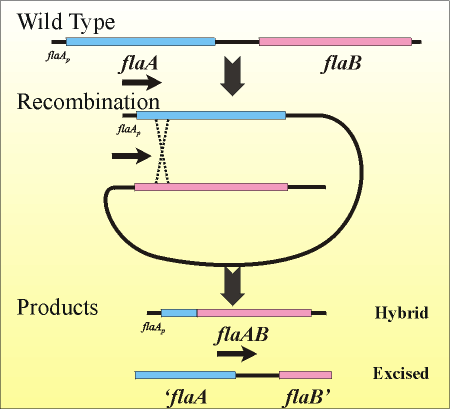

Flagellin Gene Conversion - Proteus mirabilis |
|

|
|
Proteus mirabilis is a motile Gram-negative bacterium that has the ability to differentiate from a short, vegetative swimmer cell possessing three to five polar flagella into a long, filamentous, multinucleated, and hyperflagellated swarmer cell upon contact with solid surfaces or viscous liquids. The development of P. mirabilis biofilms and the colonization of surfaces by these bacteria is facilitated through the increased mobility and surface-area contact provided by the swarmer cell. We have discovered that P. mirabilis possesses (at least) two tandemly arranged flagellin-encoding genes on its chromosome. flaA is actively expressed, while flaB is a silent copy. These genes undergo a process of gene conversion in which an internal segment of the flagellin locus is excised, genetically fusing a 5’ portion of flaA to a 3’ segment of flaB. This results in a hybrid gene, flaAB, that is expressed via the flaA promoter and results in a hybrid flagellin protein. We are investigating the molecular mechanism underlying flagellin gene conversion to understand how it functions and what advantages these new flagella provide the cells during biofilm formation. |